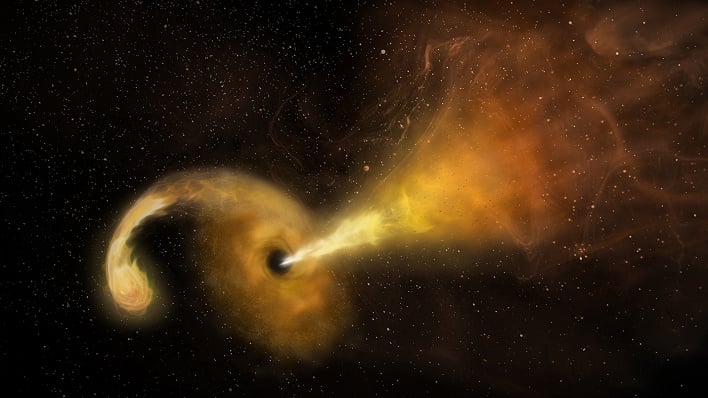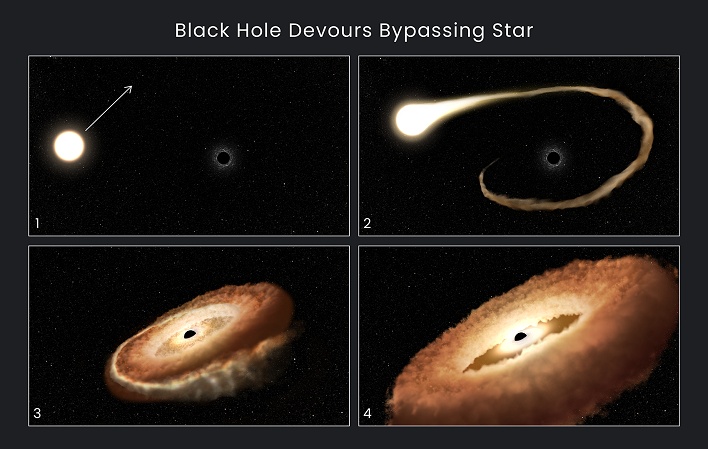Watch: NASA’s Hubble Captures Stunning Footage Of A Black Hole Shredding A Star

The event is referred to as a "tidal disruption event." However, NASA says the wording "belies the complex, raw violence of a black hole encounter." The fact that there is a balance between the black hole's gravity pulling in a star's assets, and radiation blowing material back out, equates to a black hole being a "messy eater."
Astronomers used Hubble's powerful ultraviolet sensitivity to study the light from the shredded star, which included hydrogen, carbon, and more. NASA stated, "The spectroscopy provides forensic clues to the black hole homicide."
"However, there are still very few tidal events that are observed in ultraviolet light given the observing time. This is really unfortunate because there's a lot of information that you can get from the ultraviolet spectra," explained Emily Engelthaler of the Center for Astrophysics (CfA). "We're excited because we can get these details about what the debris is doing. The tidal event can tell us a lot about a black hole."

"Typically, these events are hard to observe. You get maybe a few observations at the beginning of the disruption when it's really bright. Our program is different in that it is designed to look at a few tidal events over a year to see what happens," added Peter Maksym of the CfA. "We saw this early enough that we could observe it at these very intense black hole accretion stages. We saw the accretion rate drop as it turned to a trickle over time."
Hubble's spectroscopic data was interpreted as coming from a very bright, hot, donut-shaped area of gas that was once a star. The area, known as a torus, is about the size of the solar system and is swirling around a black hole in the middle.
"We're looking somewhere on the edge of that donut. We're seeing a stellar wind from the black hole sweeping over the surface that's being projected towards us at speeds of 20 million miles per hour (three percent the speed of light)," remarked Maksym. "We really are still getting our heads around the event. This is an exciting place for scientists to be: right at the interface of the known and the unknown."

